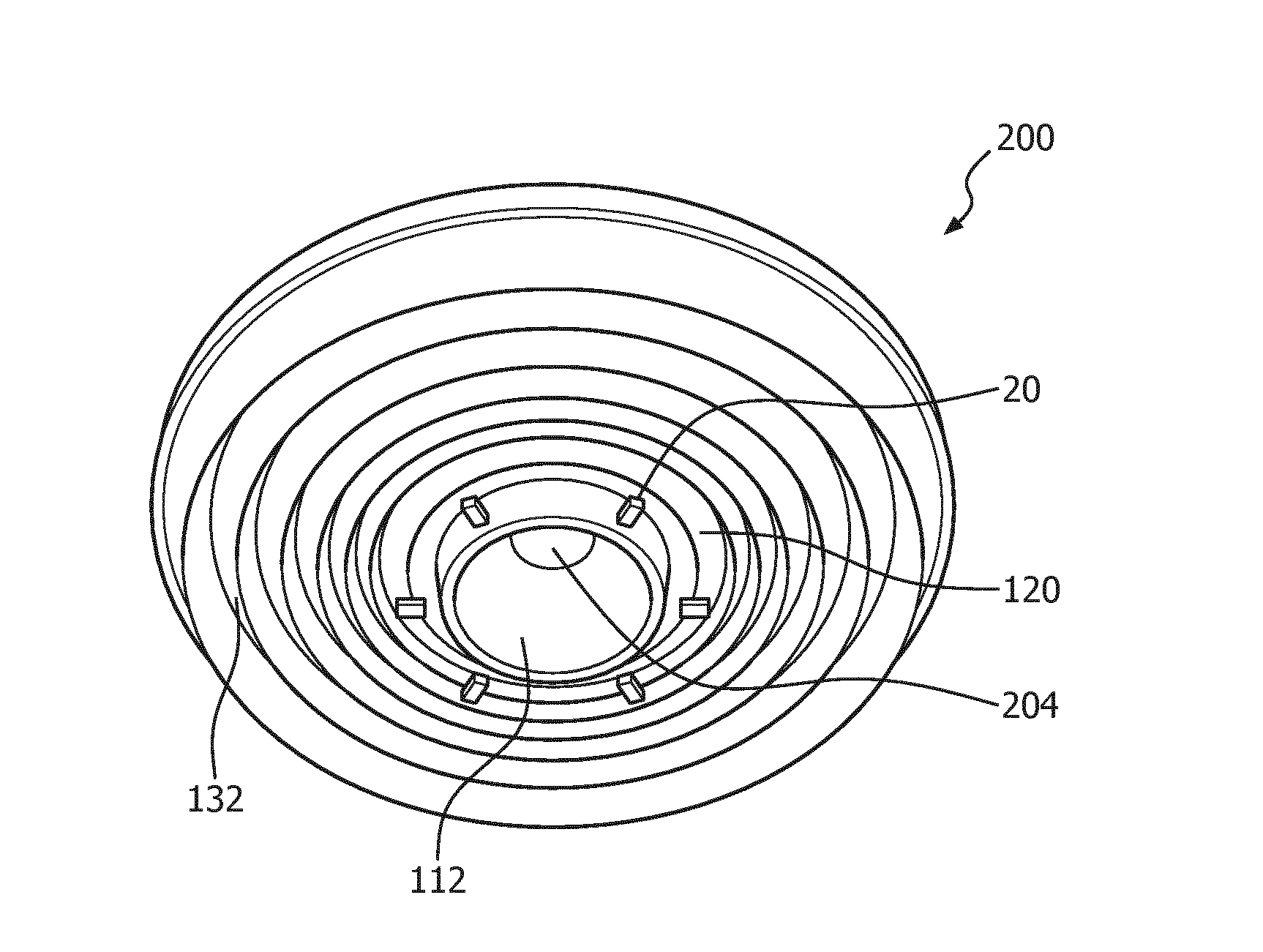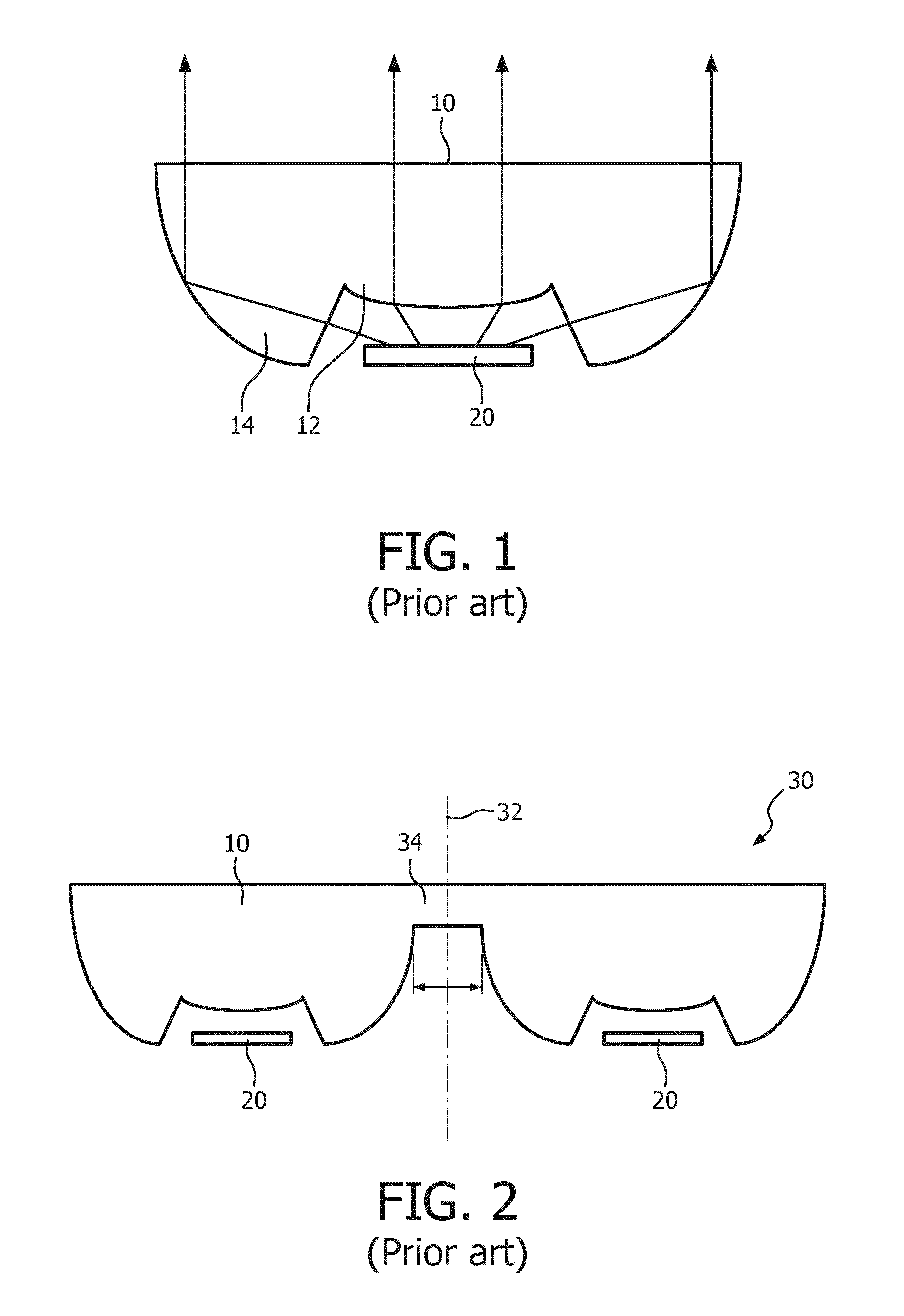Lighting device and luminaire
- Summary
- Abstract
- Description
- Claims
- Application Information
AI Technical Summary
Benefits of technology
Problems solved by technology
Method used
Image
Examples
Embodiment Construction
[0039]It should be understood that the Figures are merely schematic and are not drawn to scale.
[0040]It should also be understood that the same reference numerals are used throughout the Figures to indicate the same or similar parts.
[0041]In the context of the present application, a prism is a multi-faceted body or protrusion comprising at least one surface or facet for refracting incident light towards at least one other surface or facet for reflecting the refracted light received by the at least one surface in a desired direction. As is known per se, such a desired reflection may be achieved by controlling the shape of these surfaces of facets. In at least some embodiments, the at least one other surface or facet achieves total internal reflection. It is noted that such prisms are sometimes also referred to as facets, e.g. when referring to Fresnel-type lenses and collimators.
[0042]FIG. 4 schematically depicts an aspect of a lighting device including a collimating lens according t...
PUM
 Login to View More
Login to View More Abstract
Description
Claims
Application Information
 Login to View More
Login to View More - R&D
- Intellectual Property
- Life Sciences
- Materials
- Tech Scout
- Unparalleled Data Quality
- Higher Quality Content
- 60% Fewer Hallucinations
Browse by: Latest US Patents, China's latest patents, Technical Efficacy Thesaurus, Application Domain, Technology Topic, Popular Technical Reports.
© 2025 PatSnap. All rights reserved.Legal|Privacy policy|Modern Slavery Act Transparency Statement|Sitemap|About US| Contact US: help@patsnap.com



